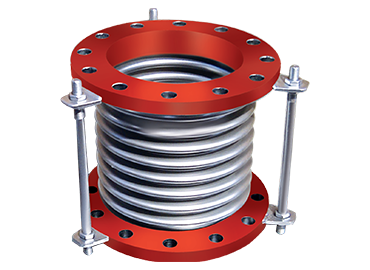When it comes to removing stubborn fat, modern advancements in cosmetic surgery have created more choices than ever. For those considering body contouring, the debate often comes down to laser liposuction vs. traditional lipo—but which truly delivers better results? In cities like Riyadh, where patients seek fast recovery and natural-looking outcomes, laser liposuction in Riyadh has rapidly become a top choice for those wanting precision, comfort, and minimal downtime.
Let’s dive into the core differences between the two procedures and discover which option aligns best with your goals.
The Technology Behind the Treatments:
Both procedures aim to eliminate unwanted fat, but the techniques vary significantly in how they achieve this. Understanding how each method works is key to choosing the right one for your body.
Traditional Liposuction Explained:
- Uses a cannula (metal tube) to physically suction fat
- Requires general anesthesia in most cases
- Often involves more tissue trauma
- Typically results in longer downtime and recovery
Laser Liposuction Explained:
- Uses laser energy to liquefy fat before removal
- Requires only local anesthesia
- Causes less bruising and swelling
- Stimulates collagen for added skin tightening
Laser lipo is a more refined technique, combining fat removal with skin rejuvenation benefits.
Comparing Results: Fat Removal and Body Contouring:
The ultimate goal of any lipo procedure is a smoother, more sculpted body. But how do the results of laser liposuction compare to traditional methods?
Fat Reduction Efficiency:
- Traditional Lipo: Removes larger volumes of fat at once, ideal for major fat deposits
- Laser Lipo: Targets small-to-medium areas with precision, ideal for contouring
Contouring Results:
- Traditional Lipo: May leave uneven or sagging skin due to lack of tightening
- Laser Lipo: Delivers more sculpted, firm results thanks to heat-induced collagen production
For those who want smoother transitions and definition in areas like the chin, arms, or lower belly, laser lipo often yields superior aesthetic outcomes.
Recovery Time and Downtime:
One of the biggest differences between the two procedures is how long it takes to recover and return to normal life. If your schedule is tight, this factor alone can be a game changer.
Recovery with Traditional Liposuction:
- Requires 1–2 weeks off work
- Noticeable bruising and discomfort
- Longer-lasting swelling (up to several weeks)
- May require drains post-procedure
Recovery with Laser Liposuction:
- Back to work in 1–2 days
- Mild soreness, easily managed
- Minimal swelling and bruising
- No drains or stitches in most cases
This fast recovery is one of the top reasons laser lipo is a leading choice among busy professionals and parents.
Safety and Side Effects:
Safety is always a priority, especially when choosing an invasive or minimally invasive cosmetic procedure. The nature of the treatment technique affects your risk level.
Traditional Lipo Risks:
- Higher chance of infection due to larger incisions
- Potential for skin irregularities
- More trauma to blood vessels and nerves
Laser Lipo Advantages:
- Smaller incisions mean reduced infection risk
- Lower chance of contour irregularities
- Controlled laser energy helps seal blood vessels, reducing bleeding
While both methods are considered safe when performed by licensed professionals, laser lipo often comes with fewer complications and quicker healing.
Skin Tightening: A Key Advantage:
One area where laser liposuction clearly outshines the traditional method is its ability to tighten the skin post-treatment. This is especially important for individuals with mild skin laxity.
How Laser Lipo Enhances Skin Quality:
- Stimulates new collagen production
- Reduces the appearance of sagging skin
- Smoothes texture and improves elasticity
Traditional lipo, in contrast, often leaves behind loose skin—especially after larger fat removals. This can sometimes require additional skin-tightening procedures.
Ideal Candidates for Each Option:
Not every body is the same, and the best results come from choosing the right procedure for your specific needs and goals.
Best for Traditional Lipo:
- Individuals needing large volume fat removal
- Patients willing to commit to longer recovery
- Those undergoing body lift or reconstructive procedures
Best for Laser Lipo:
- Those near their ideal weight with stubborn fat pockets
- Patients wanting skin tightening with fat removal
- Individuals looking for fast recovery and minimal downtime
The right choice depends on how much fat you want to remove and how important recovery time and skin appearance are to you.
Growing Popularity in Riyadh:
As non-invasive and minimally invasive treatments continue to gain popularity, laser liposuction in Riyadh is becoming the preferred option in 2025. Clinics across the city are embracing this technology due to its excellent patient outcomes and reduced risks.
Why Riyadh Patients Are Making the Switch:
- High demand for subtle, sculpted aesthetics
- Access to top-tier laser equipment and trained specialists
- Preference for procedures with minimal interruption to lifestyle
Riyadh’s wellness and beauty scene is aligned with global trends—placing laser lipo at the forefront of modern fat reduction.
Final Verdict:
When comparing laser liposuction vs. traditional lipo, both have their place in cosmetic surgery. However, for those seeking a safer, smoother, and faster recovery process with added skin tightening, laser lipo clearly takes the lead. The technology offers precise fat removal with fewer risks and visible results that enhance both body shape and skin texture.
If you’re ready to take the next step in your body contouring journey, consider consulting a certified specialist who offers both options—so you can make a fully informed decision based on your personal goals and lifestyle.




